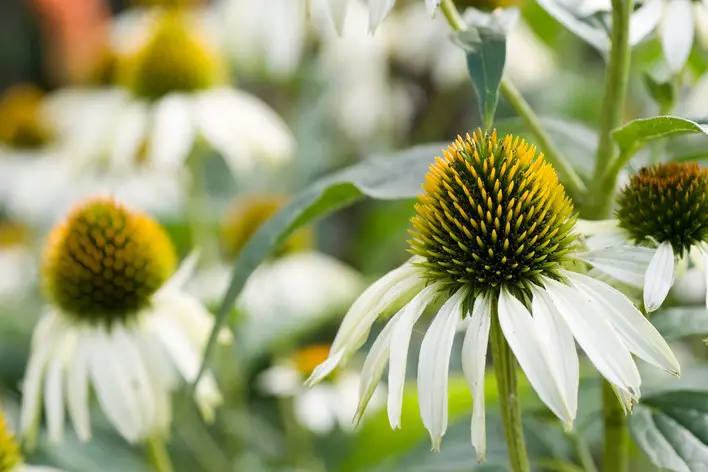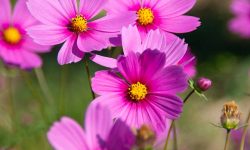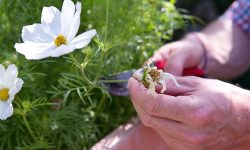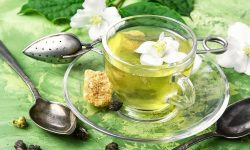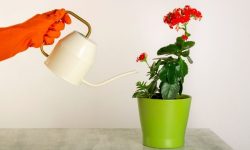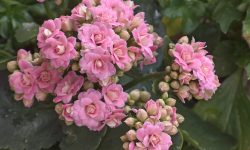Echinacea, also known as coneflower, is a striking perennial loved for its vibrant purple petals and ability to attract bees and butterflies. Beyond its ornamental charm, echinacea is also valued for its medicinal benefits, often linked to boosting overall health. Learning how to propagate echinacea not only saves money on buying new plants but also brings the rewarding experience of growing strong, beautiful flowers with your own hands.
There are several ways to propagate echinacea, including seed sowing, division, and cuttings. Each method offers unique results and a chance to explore the plant’s versatility. By mastering proper techniques and choosing the right timing, you can maintain a flourishing garden filled with colorful blooms. This guide will walk you through expert tips and reliable methods to ensure successful echinacea propagation and long-lasting garden beauty.
To propagate echinacea successfully, it is important to understand its natural growth habits. Echinacea is a hardy perennial native to North America, known for its resilience and ability to thrive in diverse conditions. The plant develops a strong taproot that anchors it deeply in the soil, providing drought tolerance and winter survival. Its upright stems can grow between two and four feet tall, topped with large, daisy-like blooms in purple, pink, or white shades. These vibrant flowers appear from midsummer through fall, attracting bees, butterflies, and other pollinators that ensure continued seed production.
The plant’s growth cycle influences the best propagation methods. Echinacea forms a basal rosette of leaves in its early stages, which later develops into a clump that can be divided. Plants grown from seed often take until their second year to produce flowers, demanding patience from gardeners. Mature plants, however, establish quickly after division or cuttings and continue to bloom reliably. Another notable advantage is echinacea’s natural resistance to many pests and diseases, which reduces maintenance needs. This resilience makes it an excellent candidate for propagation by both beginners and experienced gardeners.
Echinacea is also highly adaptable to soil and light conditions. Although it performs best in nutrient-rich, well-draining soil and full sun, it can tolerate partial shade and poorer soils if drainage is sufficient. This adaptability ensures that propagated plants remain vigorous even in less-than-ideal environments. Understanding these growth characteristics is the foundation for choosing the right propagation strategy. With this knowledge, gardeners can confidently propagate echinacea, knowing that the new plants will establish well, flower abundantly, and contribute beauty and ecological value to any garden for many years.
Propagating echinacea offers gardeners more than just new plants. It provides an affordable way to expand the garden without spending extra money on nursery purchases. By starting new plants from seeds, divisions, or cuttings, you ensure a steady supply of coneflowers that return each season. This means you can design larger flower beds, create pollinator-friendly borders, or fill empty spots with reliable perennials. Many gardeners also find personal joy in the process, as nurturing a new plant from the beginning is a rewarding and creative experience.
Another major benefit is the ability to preserve desirable plant traits. Some echinacea varieties have unique flower colors, petal shapes, or growth patterns that you may want to reproduce. By propagating from divisions or cuttings, you can clone the exact features of the parent plant, ensuring those qualities remain in your garden. For those who enjoy experimenting, seed propagation opens opportunities to discover unexpected variations. New seedlings may display subtle changes in color or size, adding diversity and surprise to your garden design.
Propagation also promotes plant health and long-term resilience. Dividing mature echinacea helps prevent overcrowding and encourages stronger root systems. Younger plants established from propagation tend to adapt faster to their growing environment and show better resistance to stress. Increasing the number of echinacea plants in your garden also benefits local ecosystems by attracting bees, butterflies, and birds. These pollinators, in turn, help other plants thrive, creating a balanced and sustainable garden. By propagating echinacea, you not only enjoy beautiful blooms but also contribute to biodiversity, soil health, and ecological harmony in your outdoor space.
Choosing the right time to propagate echinacea is crucial for success. Like many perennials, echinacea follows a seasonal growth cycle that affects how well it responds to propagation. The best period depends on the method you choose. Seeds are usually sown in spring when soil temperatures warm and days lengthen. This gives seedlings a full growing season to develop strong roots before winter arrives. For gardeners in colder climates, starting seeds indoors in late winter ensures earlier germination and stronger plants.
Division is best carried out in early spring or early fall when the plant is not actively flowering. At these times, echinacea directs its energy toward root growth rather than bloom production. Dividing in spring allows new plants to settle before summer heat, while fall division gives them time to establish roots before dormancy. Avoid dividing during midsummer, as high temperatures and flowering stress can reduce survival rates. Timing divisions carefully leads to stronger, healthier young plants.
Cuttings are typically taken in late spring or early summer when plants produce vigorous new shoots. Young, flexible stems root more easily and adapt quickly to potting soil. By starting cuttings early, you allow them to grow steadily through the season and be ready for outdoor planting the following year. No matter which method you use, propagation success relies heavily on timing. Understanding the plant’s natural cycle ensures your new echinacea plants develop strong root systems and maintain their resilience. With proper timing, propagation becomes simpler, more effective, and far more rewarding.
Propagating Echinacea from Seeds
Seed propagation is one of the most popular ways to grow echinacea because it gives gardeners the opportunity to start plants from scratch. Seeds can be harvested from dried flower heads in late summer or purchased from reliable garden centers. To improve germination rates, many growers use cold stratification, a process that involves keeping seeds in a moist medium inside the refrigerator for four to six weeks. This step breaks dormancy and prepares the seeds for successful growth. Once ready, seeds can be sown outdoors in spring or started indoors in trays under lights. Consistent warmth and light moisture are key to sprouting.
Although echinacea seeds may take several weeks to germinate, the results are worth the wait. Seed-grown plants often need two years before producing their first blooms, but they bring exciting diversity to the garden. Each seedling may show subtle variations in petal shape, flower size, or color, creating a unique display. Once established, these plants are hardy, drought-tolerant, and long-lived, requiring little care. Propagating by seed is ideal for patient gardeners who want to expand their garden naturally while enjoying the beauty of genetic diversity and the joy of nurturing plants from their earliest stage.
Propagating Echinacea through Division
Division is the quickest and most effective way to increase your echinacea collection while keeping the exact characteristics of the parent plant. Mature echinacea naturally develops large clumps with multiple stems and roots that can be carefully split into smaller plants. This method is best done in early spring before new growth begins or in early fall once blooming has finished. Dividing at these times allows the plants to direct their energy toward root development rather than flowering. Each new section should contain healthy roots and at least one strong shoot to ensure rapid establishment.
Divided echinacea plants adapt quickly because they already have mature root systems capable of supporting new top growth. Many divisions will even bloom in the first year after replanting, providing faster results than seed propagation. Division also prevents overcrowding, which can weaken older clumps and reduce flowering performance. Regularly dividing echinacea every few years helps maintain plant vigor and promotes healthier growth. For gardeners who want reliable results and more immediate blooms, division is an excellent propagation technique that combines efficiency, speed, and long-term benefits.
Propagating Echinacea from Cuttings
Cuttings are a precise way to clone echinacea plants and ensure all new growth mirrors the parent. This method is especially useful for preserving unique hybrids or unusual flower colors that may not come true from seed. The best time to take cuttings is late spring or early summer, when stems are actively growing and flexible. Select a healthy stem, cut a section four to six inches long just below a node, and remove the lower leaves. Dipping the cutting in rooting hormone encourages faster root formation before planting it in a light, well-draining mix.
Moisture and humidity are critical during the rooting stage. Keeping the soil evenly moist but never waterlogged helps avoid rot, while covering the pot with a plastic bag or dome maintains humidity. Roots generally develop in several weeks, followed by fresh shoots. Once rooted, cuttings should be transplanted into larger pots or gradually hardened off outdoors. Although this method requires more care than seeds or divisions, it guarantees exact copies of the parent plant. Cuttings are perfect for gardeners who value precision and wish to preserve rare or valuable echinacea varieties with confidence.
Planting Echinacea
Choosing the Right Location
Echinacea thrives in full sun, making site selection one of the most important factors for healthy growth. A location that receives at least six to eight hours of direct sunlight daily will encourage strong stems and abundant flowers. While echinacea can tolerate partial shade, plants grown in low light often become leggy and produce fewer blooms. Soil should be well-draining, as this perennial does not perform well in soggy conditions. Heavy clay soils may require amendment with sand or compost to improve aeration and drainage. Choosing the right spot ensures your echinacea develops deep roots and resists stress.
Gardeners should also consider the surrounding plants when selecting a location. Echinacea pairs well with other sun-loving perennials such as black-eyed Susans, coreopsis, and ornamental grasses. These combinations create a natural prairie-like display that enhances pollinator activity. Additionally, echinacea attracts bees, butterflies, and birds, so planting it near other nectar-rich flowers supports local ecosystems. A sunny, open area with good airflow reduces the risk of fungal diseases and keeps plants healthier. By carefully choosing the right location, gardeners set the foundation for years of strong, reliable growth.
Soil Preparation
Proper soil preparation is the key to growing echinacea that thrives year after year. This perennial prefers well-draining soil with a pH between 6.0 and 7.0, making slightly acidic to neutral conditions ideal. Before planting, gardeners should loosen the soil to a depth of 12 to 15 inches and incorporate organic matter such as compost or aged manure. This step not only improves fertility but also enhances moisture retention without creating waterlogged conditions. If your soil is too heavy or clay-based, adding coarse sand or perlite helps improve drainage. Healthy soil encourages echinacea to develop strong taproots, which in turn support better drought resistance.
Another important step in soil preparation is removing weeds and rocks that may compete with young plants. Weeds can quickly rob echinacea of essential nutrients and water, slowing establishment. A pre-planting soil test is also recommended to determine nutrient levels and make adjustments with natural amendments. Phosphorus-rich fertilizers support root development, while potassium promotes strong stems and flower production. Avoid excessive nitrogen, as it leads to weak, leafy growth at the expense of blooms. Preparing soil carefully ensures your echinacea starts with the best possible foundation for long-term success.
Planting Techniques
Once the location and soil are ready, it is time to plant echinacea. Gardeners can begin with seeds, seedlings, or divided clumps depending on preference. When planting seeds outdoors, sow them about a quarter-inch deep in well-prepared soil after the last frost. If transplanting young plants or divisions, dig holes large enough to accommodate roots without crowding, usually spaced 18 to 24 inches apart. Proper spacing allows good air circulation, reducing the chance of fungal problems while also giving each plant room to spread naturally. After planting, gently firm the soil around the base and water thoroughly to help roots settle in.
Mulching is another valuable technique to maintain soil moisture and control weeds. A light layer of organic mulch, such as shredded bark or straw, keeps the root zone cooler during summer and prevents competition from weeds. However, avoid piling mulch directly against stems, as this may encourage rot. In the first year, consistent watering helps echinacea establish, but once mature, the plant becomes remarkably drought-tolerant. Careful planting practices ensure echinacea adapts quickly to its environment and rewards gardeners with long-lasting color and resilience.
Caring for Echinacea
Watering Needs
Echinacea is naturally drought-tolerant once mature, but proper watering is crucial during the first growing season. Young plants need consistent moisture to establish deep root systems, so the soil should be kept evenly moist without becoming soggy. A deep watering once or twice a week is usually sufficient, depending on rainfall and climate. Allowing the top inch of soil to dry before watering again prevents overwatering and root rot, two common problems for echinacea grown in heavy soils. Deep watering also encourages roots to grow downward, making the plant more resilient in dry spells.
As the plant matures, its watering needs decrease, and it can withstand longer periods without rainfall. Established echinacea should only be watered during extended droughts or heatwaves. Overwatering mature plants often weakens their root system and makes them more prone to fungal diseases. Applying mulch around the base helps retain moisture, regulate soil temperature, and reduce the frequency of watering. By balancing water supply according to plant age and seasonal conditions, gardeners ensure echinacea remains both hardy and low-maintenance throughout its life.
Fertilizing Requirements
Echinacea is not a heavy feeder, which makes it an easy-care perennial for most gardens. In fact, too much fertilizer—especially nitrogen—can cause excessive leafy growth at the expense of flower production. A light application of compost or a balanced slow-release fertilizer in early spring is usually enough to support healthy development. This provides the nutrients needed for strong stems, vibrant foliage, and abundant blooms without overwhelming the plant. Overfertilizing can also make echinacea more susceptible to pests and disease, so moderation is key.
Organic matter is often the best long-term solution for echinacea health. By enriching soil naturally, compost improves structure, drainage, and nutrient availability. Gardeners should avoid frequent chemical fertilizers, as these can lead to nutrient imbalances. Instead, refreshing the soil with compost once or twice a year creates a sustainable growing environment. With this approach, echinacea develops deep roots and thrives with minimal intervention. Fertilizing wisely ensures long-lasting beauty and resilience, allowing the plant to produce flowers reliably season after season.
Mulching Practices
Mulching plays a vital role in maintaining soil health and supporting echinacea growth. A two- to three-inch layer of organic mulch such as shredded bark, straw, or compost helps conserve moisture, regulate soil temperature, and reduce weed competition. By shielding the soil surface, mulch prevents rapid drying during hot summer months, which is especially beneficial for young plants still developing their root systems. It also protects roots from extreme cold in winter, improving echinacea’s ability to survive harsh conditions.
When applying mulch, it is important to keep it a few inches away from the plant’s crown to prevent rot. Refreshing the mulch layer once or twice per year keeps it effective while adding nutrients to the soil as it decomposes. Mulching also supports soil organisms like earthworms, which naturally improve fertility and aeration. By combining mulch with proper watering and soil preparation, gardeners create a balanced environment that minimizes maintenance. This simple yet powerful practice ensures echinacea remains healthy, productive, and visually striking throughout the growing season.
Pruning and Deadheading
Pruning and deadheading are essential practices to keep echinacea blooming and looking its best. Deadheading, or removing spent flowers, encourages the plant to produce new blooms instead of diverting energy into seed formation. This is particularly effective during the summer, extending the flowering season and maintaining a neat appearance. Simply snip the flower stem just above a healthy set of leaves to promote new growth. Regular deadheading also reduces self-seeding if you want to control where new plants emerge.
In late fall, many gardeners cut back echinacea stems to a few inches above the ground to prepare the plant for winter dormancy. However, leaving some seed heads standing provides food for birds like goldfinches and adds winter interest to the garden. In early spring, remove old stems to make way for fresh growth. This cycle of timely deadheading and seasonal pruning ensures echinacea stays vigorous, produces abundant flowers, and contributes to garden biodiversity year after year.
Pest and Disease Management
Echinacea is generally a hardy plant, but it can occasionally face issues with pests and diseases. Aphids, Japanese beetles, and eriophyid mites are the most common pests that attack leaves, stems, and flower buds. These insects weaken the plant by sucking sap or chewing foliage, which reduces vigor and bloom quality. Hand-picking beetles, spraying plants with water to remove aphids, or using insecticidal soap can help manage infestations naturally. Beneficial insects like ladybugs are also valuable allies in controlling pest populations.
Diseases such as powdery mildew, leaf spot, or aster yellows may affect echinacea under unfavorable conditions. Good air circulation, proper spacing, and avoiding overhead watering reduce fungal problems. Aster yellows, caused by a phytoplasma spread by leafhoppers, is more serious and often requires removing and discarding infected plants. Practicing crop rotation and keeping the garden clean of debris also lowers disease risks. By monitoring regularly and applying preventative measures, gardeners can keep echinacea strong and resistant without relying heavily on chemicals.
Common Mistakes in Propagation
Skipping Cold Stratification for Seeds
One of the most common mistakes when propagating echinacea from seeds is skipping cold stratification. Echinacea seeds have a built-in dormancy mechanism that prevents them from sprouting immediately, even in the best soil conditions. Many gardeners mistakenly think that planting seeds directly in fertile soil and watering regularly will guarantee growth, but without a simulated winter period, germination rates remain very low. The result is often uneven sprouting or complete failure, leaving gaps in the garden and wasted effort. This can be especially frustrating for beginners who expect quick, consistent results.
Cold stratification is a simple but crucial step that mimics natural winter conditions. It involves placing seeds in a moist medium, such as paper towels or sand, sealing them in a plastic bag, and refrigerating them for four to six weeks. This process triggers the seed’s internal clock to prepare for spring growth. When properly stratified, echinacea seeds germinate more evenly, producing strong, healthy seedlings. Taking the extra time to stratify ensures a higher success rate and helps establish resilient plants that will thrive for many years, rewarding the gardener’s patience.
Overwatering Young Cuttings
Overwatering young echinacea cuttings is another common propagation mistake that leads to failure. When stems are freshly cut, they lack established roots to absorb and regulate water intake. Saturated soil quickly creates conditions for fungal growth and rot, which can destroy cuttings within days. Many gardeners assume that frequent, heavy watering speeds up rooting, but this practice usually has the opposite effect. Instead of encouraging growth, it drowns delicate tissue and prevents roots from forming. This is one of the main reasons why cuttings often wilt or collapse before they have a chance to grow.
To avoid this problem, cuttings should be placed in a well-draining mix such as perlite, sand, and compost. The soil should be kept lightly moist but never waterlogged, which is best achieved through misting rather than soaking. Covering cuttings with a humidity dome or plastic bag helps maintain consistent moisture without flooding the soil. Bright, indirect light also encourages strong development. By monitoring soil moisture carefully and watering only when the top layer begins to dry, gardeners create the perfect environment for cuttings to root successfully. Balanced watering is the key to turning fragile stems into thriving new plants.
Improper Division of Mature Plants
Improper division of mature echinacea clumps is another mistake that reduces propagation success. Dividing plants too aggressively or cutting them into very small sections often leaves divisions without enough roots to survive. A weak root system cannot absorb the nutrients and water required for recovery, leading to poor growth or plant death. Timing also plays a role—dividing echinacea in midsummer while it is blooming puts unnecessary stress on the plant and reduces the likelihood of survival. Gardeners may notice that divisions wilt quickly or fail to produce new shoots when the process is done incorrectly.
The best practice is to divide echinacea in early spring or fall, when temperatures are moderate and plants are not focused on flowering. Each division should include one or more strong shoots and a solid portion of roots. Preparing the soil beforehand by loosening it and ensuring good drainage helps transplants establish quickly. Divisions should be replanted immediately to prevent roots from drying out, and watering should be done gently to settle the soil around them. Using sharp, sterilized tools and handling roots carefully also prevents unnecessary damage. Proper division not only creates new plants but also rejuvenates older clumps, resulting in healthier growth overall.
Increasing Germination Success
Improving the germination rate of echinacea seeds requires more than simply planting and watering them. Echinacea has naturally tough seeds that resist sprouting without the right conditions. Gardeners often face frustration when only a small percentage of seeds emerge, but with a few adjustments, success rates can improve dramatically. Factors such as seed preparation, soil choice, and environmental control all play important roles in the early stages of growth. By paying attention to these details, gardeners can save time and ensure a stronger start for their plants.
One proven method to increase germination is cold stratification, which mimics natural winter dormancy. Storing seeds in a damp paper towel or sand inside a sealed plastic bag and refrigerating them for several weeks helps break dormancy. After this period, seeds should be sown in light, well-draining soil with just a thin layer of covering, since echinacea seeds need light exposure to germinate effectively. Maintaining consistent moisture without overwatering encourages healthy root development, while placing trays in a warm spot with indirect sunlight creates an ideal environment.
Another important factor is timing. Starting seeds indoors six to eight weeks before the last frost gives them a head start, while direct sowing outdoors should be done after the danger of frost has passed. Using sterile seed-starting mix reduces the risk of fungal problems that can affect young seedlings. Gardeners who add a gentle heat mat or humidity dome often see faster and more uniform sprouting. With these combined strategies, germination rates can rise significantly, allowing more seedlings to mature into strong echinacea plants that will thrive in the garden for years to come.
Encouraging Strong Root Development
A healthy root system is the foundation of a vigorous echinacea plant. Without strong roots, seedlings and cuttings cannot absorb the nutrients and water they need to thrive. Many propagation attempts fail not because of poor seed quality or environmental factors, but because the roots are unable to develop properly in the early stages. Focusing on root health from the beginning ensures plants grow stronger, withstand stress better, and live longer in the garden.
The growing medium plays a crucial role in root development. Echinacea roots thrive in well-draining soil that is rich in organic matter but not overly compact. A mix of compost, sand, and perlite is ideal because it provides both aeration and moisture retention. Overwatering is one of the biggest threats to young roots, as it can suffocate them and cause rot. Instead, consistent but moderate watering allows roots to spread deeper in search of moisture. This not only strengthens the plant but also improves its drought tolerance later in life.
Another way to encourage strong roots is through proper transplanting and care. When moving seedlings outdoors, hardening them off gradually reduces transplant shock and allows roots to adjust to new conditions. Applying a diluted organic fertilizer or root stimulant during this phase can further boost growth. Mulching around the base of young plants helps retain soil moisture while preventing weed competition. By supporting root health at every stage, gardeners set the foundation for echinacea plants that are resilient, vibrant, and capable of producing abundant blooms year after year.
FAQ
How long does it take echinacea seeds to germinate?
Echinacea seeds usually take 10 to 20 days to germinate, depending on temperature and soil conditions. If cold stratification is done before planting, the process is often faster and more consistent. Warmer soil and adequate light also encourage quicker sprouting.
Can I propagate echinacea from cuttings?
Yes, echinacea can be propagated from stem cuttings, but it requires careful handling. Cuttings should be taken from non-flowering stems, placed in a well-draining medium, and kept in high humidity until roots form. While less common than seed propagation, it can be successful with patience.
When is the best time to divide echinacea plants?
The best time to divide echinacea is in early spring or early fall. During these cooler seasons, the plant is not actively flowering, so it can focus energy on reestablishing roots. This timing reduces stress and increases the survival rate of new divisions.
Do echinacea seeds need light to germinate?
Yes, echinacea seeds require light to germinate. When planting, cover them with only a thin layer of soil or gently press them into the surface. This allows enough light exposure to trigger sprouting, while still keeping them moist for root development.
How can I improve echinacea propagation success?
Success improves with cold stratification, well-draining soil, and consistent but moderate watering. Avoid planting seeds too deep, overwatering cuttings, or dividing plants during bloom. With proper preparation and care, germination rates increase and young plants grow stronger, ensuring long-term health in the garden.
Conclusion
Propagating echinacea is both rewarding and practical, giving gardeners the chance to expand their gardens with vibrant, long-lasting blooms. Whether you start from seeds, cuttings, or division, success depends on patience, preparation, and attention to detail. By understanding common mistakes, improving germination techniques, and supporting strong root development, you can ensure healthier plants that thrive year after year. With the right care, each new echinacea will not only enhance your garden’s beauty but also provide medicinal benefits and attract pollinators. Propagation truly transforms your gardening efforts into lasting growth and abundant rewards.
